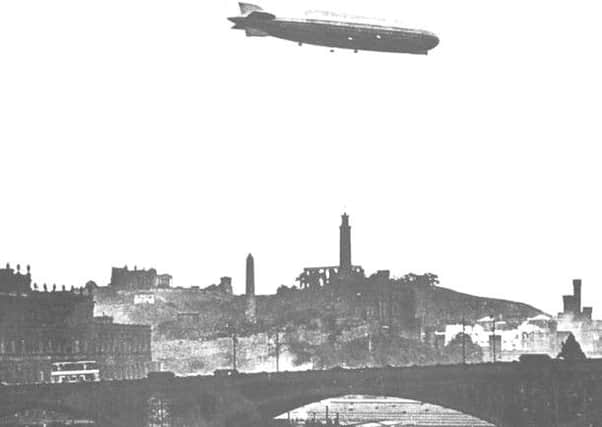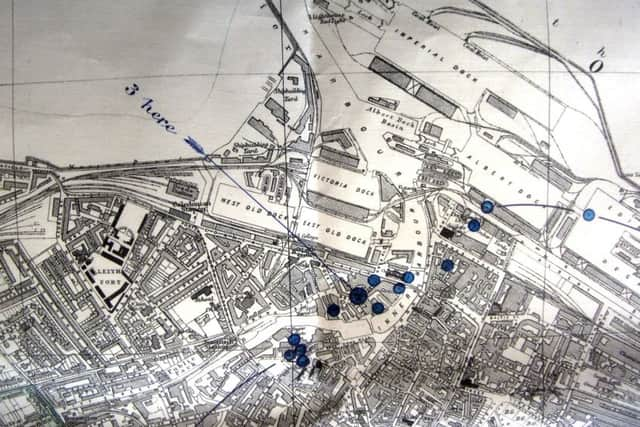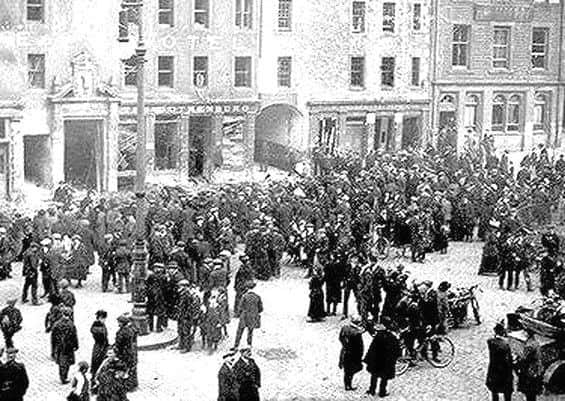Armistice 100: When zeppelin air raids brought terror to Edinburgh


On the evening of April 2 1916, two Zeppelins reached the Firth of Forth while heading for the Royal Navy Base at Rosyth in Fife.
But lost in the darkness, the lumbering airships instead made towards Edinburgh city centre.
Advertisement
Hide AdAdvertisement
Hide AdOver 35 minutes, the drones of Zeppelins L14 and L22 were punctuated with 24 explosions - bombs which killed 13 people and injured 24.


Ian Brown, assistant curator of aviation at the National Museum of Flight, said: “There was a significant impact on Edinburgh.
“Other than the shock of the city - far from the trenches of the Western Front - being attacked, there was considerable damage caused as well as loss of life.”
Warning of the impending air raid was received at 7pm.
Traffic was stopped, lights lowered and emergency services were put on alert. Residents were ordered to take refuge.


Advertisement
Hide AdAdvertisement
Hide AdJust before midnight, the first reports of bombs landing in Leith arrived - signalling the start of Scotland’s first ever air raid.
Robin Love, 66, was killed by the sixth explosive to drop.
It came through the roof of his top floor flat on Commercial Street, near the docks, with part of the shell hitting him while he was in bed.
A total of 20 bombs landed in the Leith area and caused major damage to property, but just two people were killed - the other being a one-year-old boy.
The Zeppelins then followed the Water of Leith to reach the city centre.
Advertisement
Hide AdAdvertisement
Hide AdOne bomb landed about 400 yards from Edinburgh Castle, while another fell in the grounds of George Watson’s College.
The White Hart Hotel in the Grassmarket and the County Hotel on Lothian Road suffered substantial damage, as well as a number of tenement buildings in Newington.
Six men were killed on Marshall Street, while Private Thomas Donoghue of the 3/4th Battalion Royal Scots, who was visiting his family, later died in hospital.
After the raid, the rigid airships left without any effective counterattack.
Advertisement
Hide AdAdvertisement
Hide AdA waiter, hairdresser and child were among the dead civilians.
The L14 went on to become the most successful German airship of the First World War, completing 17 attacks on Britain and dropping 22 tonnes of bombs.
Mr Brown said: “Zeppelins were also surprisingly difficult to shoot down.
“One would think that a huge aircraft filled with highly combustible hydrogen would easily burst into flames, but that was not the case.
Advertisement
Hide AdAdvertisement
Hide Ad“They flew at an altitude that was very difficult for a British fighter to reach - and even if they did, firing machine gun bullets at them would have little effect.
“The bullets would puncture the gas bags, but not ignite the hydrogen gas.
“The gas would leak, but only very slowly from the tiny holes, so this made little difference to the buoyancy of the airships.”
The damage caused to the city was in the region of £44,000, estimated to be worth about £3.6 million today.
Advertisement
Hide AdAdvertisement
Hide AdA number of sites commemorate the locations where shells landed, including high up on Castle Rock and in the Grassmarket.
Archibald Campbell was a schoolboy at George Watson’s College when the attack happened.
The 13-year-old recorded the aftermath in his diary, published online by the University of Edinburgh.
He wrote: “Wakened at 12.05am by bombs.
“Went downstairs to parlour where sat till 1.10am. From window saw blaze over Leith.
Advertisement
Hide AdAdvertisement
Hide Ad“Every window in front of school smashed. Hole about 4ft deep and 6ft across right up against Ethel Davidson’s room, which was absolutely smashed.
“Desks, window frames, broken glass, stones and piles of plaster, all smashed up, filled the room.”
Thoughts soon turned to questions about the effectiveness of anti-air raid precautions.
Attention was drawn to the large number of vessels at the waterfront which were lit up at night, as well as advice about lowering lights not applying to the gas variety.
Advertisement
Hide AdAdvertisement
Hide AdChief Constable of Leith John Macleod said at the time “a better guide for a Zeppelin could not be got”.
This led to changes addressing these issues for any future raids.
But the lasting impact of the attack was apparent in the mental health of residents.
People of the city suffered months of shock and stress following the aerial bombardment.
Advertisement
Hide AdAdvertisement
Hide AdA child who was born during the early hours before the attack was given the middle name “Raida”.
Her father pleaded with the Military Service Appeal Tribunal against conscription because the new mother had been left “nervous and sleepless” since the shelling.
Edinburgh has not seen an aerial attack as deadly as the 1916 raid ever since - not even during the Second World War.